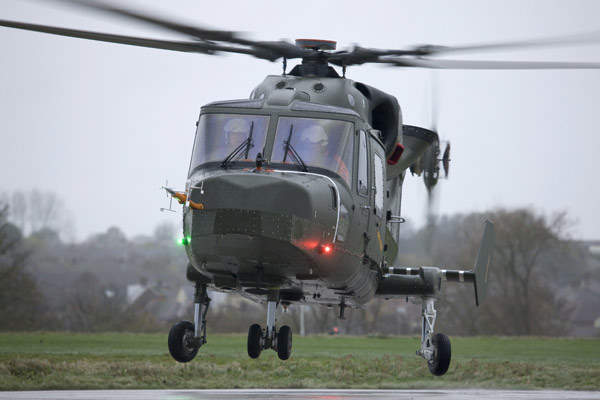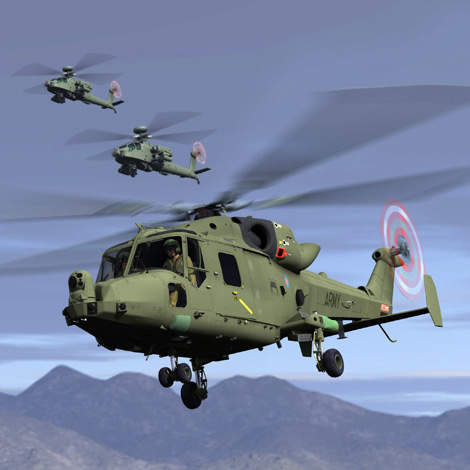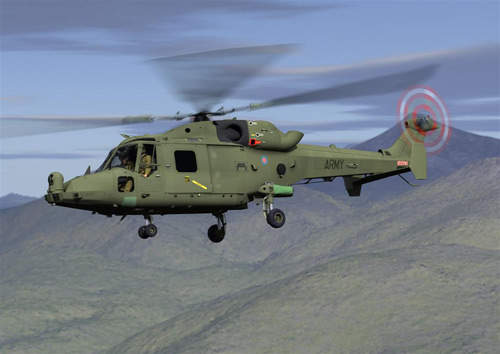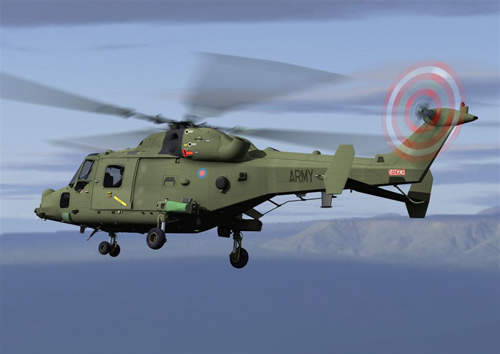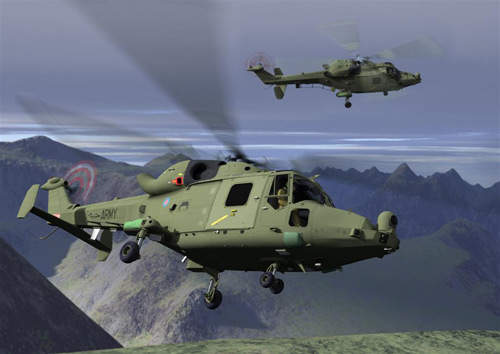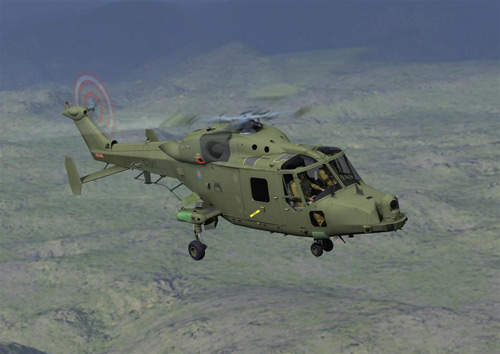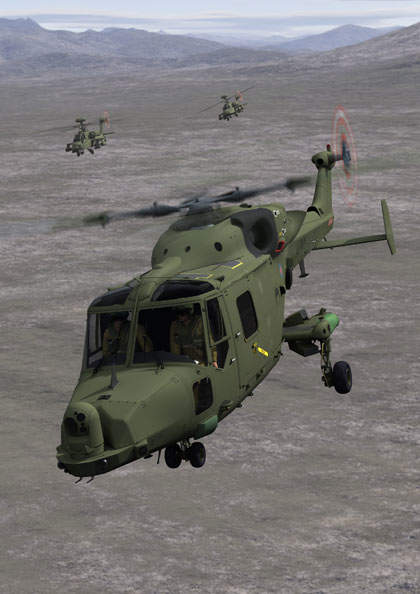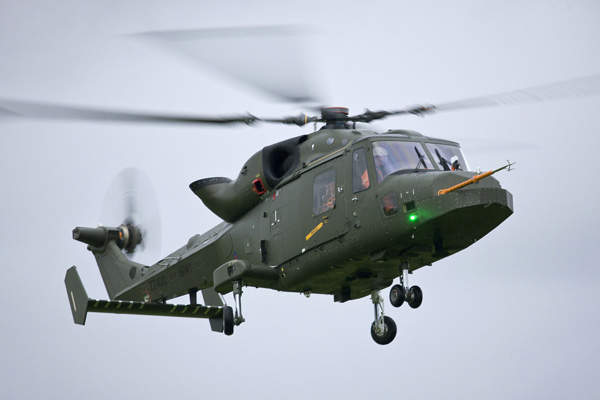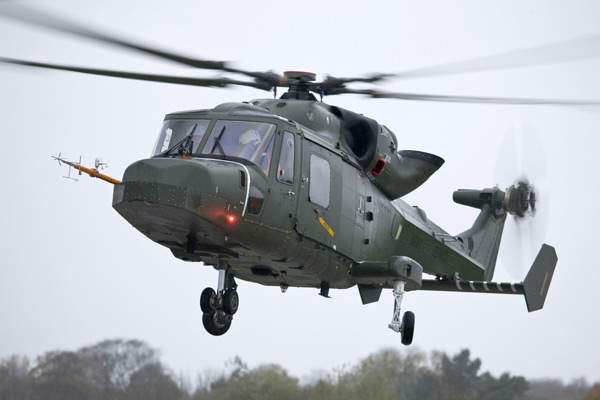
AW159 Lynx Wildcat is based on an upgraded version of the Lynx helicopter
The UK Ministry of Defence (MoD) has a £1bn programme for the AW159 Lynx Wildcat, which is based on an upgraded version of the Lynx helicopter. The programme includes an army and a naval version Lynx with a high level of commonality in airframe, cockpit displays and avionics. Previously known as the Future Lynx, it was renamed AW159 and designated the Lynx Wildcat by the UK military in April 2009.
The AW159 Lynx Wildcat was designed to meet the requirement for the British Army’s battlefield reconnaissance helicopter (BRH), formerly the battlefield light utility helicopter (BLUH), as well as the Royal Navy’s surface combatant maritime rotorcraft (SCMR).
The current Lynx helicopters entered service with the Royal Navy and the army in the mid-1970s, in anti-submarine and utility roles. Since then the Lynx helicopter has taken on an increasingly wide range of roles including: anti-surface warfare, battlefield reconnaissance, casualty evacuation, airborne command post, logistic support and tactical troop transport. The AW159 retains and extends this operational capability for the Royal Navy and the British Army.
The UK MoD initiated an 18-month assessment by AgustaWestland in 2002. In April 2005 the UK Government announced the selection of the AW159 for the army and Royal Navy’s requirements. A programme assessment phase, which was completed in early 2006, demonstrated that the AW159 met the BRH and SCMR requirements.
AW159 Lynx Wildcat helicopter orders
In June 2006, AgustaWestland announced the award of the contract by the UK MoD for 70 Lynx Wildcat helicopters, 40 for the army and 30 for the navy.
The contract also provides an option for a further ten aircraft, five for the army and five for the navy. The original order of 70 was reduced in December 2008 to 62 – 34 for the army and 28 for the navy.
Construction of the first AW159 began in October 2007. On 12 November 2009, the first AW159 completed its maiden flight at AugustaWestland’s Yeovil facility. The second test aircraft completed its maiden flight in October 2010 and the third in November 2010.
The first production aircraft completed its maiden flight in April 2011 and another six are currently undergoing their final assembly.
Deliveries are expected to begin in 2012 and the helicopters will become fully operational with the army in 2014 and the Royal Navy in 2015.
In March 2011, AgustaWestland was awarded a contract to provide a training solution, including the construction of a training facility at Yeovil. The centre will deliver training services for the Army and Royal Navy from early 2013 and early 2014 respectively.
Lynx Wildcat helicopter design
The army and navy versions of the AW159 Lynx Wildcat are to have a common marinised airframe, similar to the naval Super Lynx 300 design. The most notable changes in appearance are the new tail rotor and low-set symmetric tailplane, larger cockpit doors and a redesigned larger nose and rear fuselage.
Allowance for growth of the all-up mass of the helicopter during its 30-year life has been incorporated into initial entry-into-service design. The in-service date maximum all-up mass (MAUM) is 6,000kg. The helicopter has a built in mass growth provision for incremental upgrades up to an out-of-service date MAUM of 6,250kg.
The new nose and tail structures and up-rated common undercarriage with strengthened attachments were required to provide the necessary increased level of strength. The new low-set symmetric tailplane has been incorporated to improve flying qualities.
The redesigned nose and rear fuselage give larger space and easier access to avionic units. The larger cockpit doors give improved crew egress.
The existing composite main rotor blades will be used and married with an all-new four-blade tail rotor to give improved yaw control at high weights. The British experimental rotor programme (BERP) main rotor blades are of swept tip composite construction.
A number of crashworthiness features have been incorporated into the design, including crashworthy and armoured crew seating, crashworthy passenger seating, a ‘role fit’ armoured cabin floor, wire strike protection system and an engine infrared suppression (IRS) system on the army aircraft.
Cockpit avionics systems
Thales UK has been awarded a contract to supply an advanced avionics system which includes core avionics, communications and navigation systems and is controlled and managed by twin control display and navigation units (CDNU).
Primary flight data is displayed on four Smiths Industries SDS-5000 10in×8in liquid crystal display (LCD) integrated display units (IDU). Smiths Industries will also supply the integrated health and usage monitoring system (HUMS).
The communications system is based on a Thales Avionics secure communications control system (SCCS) which is a derivative of the Thales TopSIS, deployed on UK Chinook mk2/2A and ASTOR. The SCCS was developed for the mk8 Lynx.
The system provides plain and secure voice communication via the VHF/UHF SATURN and HF radios. The system also provides Bowman radio functionality, which the army variant of the Lynx Wildcat helicopter will use to interact within the Bowman network, exchanging secure voice and data communications. The naval variation of AW159 will have an ESM and data link capability.
The navigation suite is based on an integrated global positioning system (GPS) inertial system.
Mission systems on the AW159
General Dynamics (UK) and AgustaWestland jointly developed the helicopter’s tactical processor which manages the mission systems.
The integrated display units and a cursor control device are for the display and management of tactical views and control of the sensor suite.
Before the start of a mission, a set of mission data is sent to the mission planning system (MPS). This includes mission orders, tactical airspace information, meteorological and geographical data. This enables missions to be planned for single or multiple platforms. The plans can be rehearsed in either 2D or 3D and replanned to suit the mission parameters.
Both the army and Royal Navy AW159 versions are to be equipped with the L3 Wescam MX-15Di electro-optical laser designator turret, under a contract placed in March 2007.
The Royal Navy variant will be fitted with the Selex Sensors and Airborne Systems Seaspray 7000E active electronically scanned array (AESA) radar system for maritime surveillance missions.
AW159 weapons
A pintle-mounted general purpose machine gun (GPMG) or M3M heavy machine gun (HMG) is fitted in both the army and Royal Navy Lynx Wildcat for offensive capabilities and self protection.
Future Lynx can carry out third-party designation of targets, particularly for the Apache AH mk1 helicopter, by using the laser target designator and rangefinder fitted within the stabilised electro-optical device.
The Royal Navy AW159 Lynx Wildcat retains the Sting Ray torpedoes from Lynx mk8, and will be fitted with a new stores management system, carrier and weapons launcher.
The new stores management system enables the Lynx Wildcat to deploy a new missile or rocket system that will replace the Sea Skua as part of the MoD’s future air to surface guided weapon (FASGW) programme.
Countermeasures on the AW159 Lynx Wildcat
In September 2005, Selex Sensors and Airborne Systems announced that the Selex Helicopter integrated defensive aids system, HIDAS 15, had been selected for the AW159 Lynx Wildcat.
HIDAS 15 is the latest variant of the HIDAS now in service on the UK Army’s Apache attack helicopters.
Improved engines of the battlefield reconnaissance helicopter
The Lynx Wildcat is powered by two LHTEC CTS800-4N engines, each rated at 1,015kW (1,361shp) with full authority digital engine control (FADEC). LHTEC is a joint venture company set up by Honeywell and Rolls-Royce.
The CTS800-4N engines provide 36% greater power than the Gem engines used in current MoD Lynx helicopters, but have very similar fuel consumption.
The CTS800 engines give greatly improved hot and high and single engine performance. The CTS800-4N engine received European Aviation Safety Agency (EASA) type certification in September 2008.
The AW159 Lynx Wildcat will have an endurance of approximately three hours with standard fuel and four and a half hours with auxiliary fuel, while being able to carry half as much again as current Lynx helicopters. The CTS800 engine is qualified and certified for the Super Lynx Series 300.
Global Military Aircraft Market 2011-2021
This project forms part of our recent analysis and forecasts of the global armoured vehicles and counter-IED vehicles market available from our business information platform Strategic Defence Intelligence. For more information click here or contact us: EMEA: +44 20 7936 6783; Americas: +1 415 439 4914; Asia Pacific: +61 2 9947 9709 or via email.

